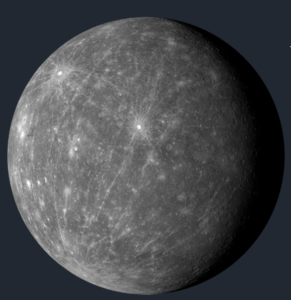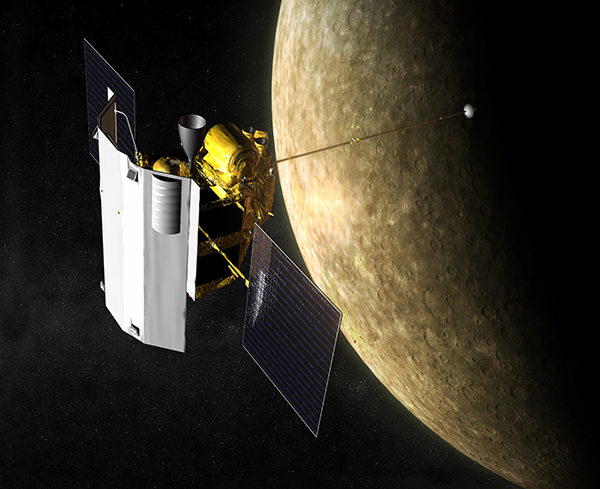
Mercury is the closest planet to the Sun and the second smallest in the Solar System. It is smaller than the Earth, but larger than the Moon. If we were placed on Mercury, the Sun would look 2 and a half times larger. The sky, however, would always look black, because there is no atmosphere that can scatter the light. Its Roman name refers to messenger of the gods, since it moves faster than the other planets. It orbits the Sun in just under 3 Earth months and instead rotates slowly on its axis, once every 58 and a half days.
During the day temperatures exceed 350º C, while at night they drop to -170º C. In 2012 it was found that there is water ice at its north pole.
Mercury, planet of extremes
Mercury suffers intensely from solar radiation. Its surface, similar to that of the Moon, is completely full of impact craters, the responsibility of which is also the Sun's, since since the formation of the Solar System it has attracted any nearby rocky body, with poor Mercury being the one that crosses the path. of these wandering rocks.
This means that in the course of two orbits the planet rotates three times on its axis. Mercury has a significant orbital eccentricity (0.2), leading it to approach 46 million km from the Sun at its perihelion; In its aphelion, meanwhile, it moves 70 million km away. The presence of a magnetic field indicates that it has a metallic, partially liquid core. Its high density, the same as that of the Earth, indicates that this core occupies almost half of the planet's volume.
Most of the current knowledge about Mercury comes from interplanetary probes, especially Mariner 10, which passed very close in the '70s, and the MESSENGER mission, launched in 2004.
Strangely, while the Moon has "seas" (solidified lava spread across the satellite), on this planet there are none, or at least the scarcity is significant, since almost the entire landscape is surrounded by topographical features.

Among other things, Mariner 10 demonstrated the existence of a very tenuous atmosphere surrounding the planet, made up of helium, argon and neon. The mission MESSENGER, which flew over Mercury in 2008, captured a series of high-resolution images and many other interesting data.
| CHARACTERISTICS | |
| Diameter | 4,879 km |
| Mass | 3,302 x 1023kg |
| Density | 5.43g/cm3 |
| Gravity | 2.78 m/s2 (0.38 Earth) |
| Surface temperature | 327 ºC (day) / -170 ºC (night) |
| Axial inclination | 0° |
| Escape velocity | 4.25 km/s |
| Rotation | 58d 3pm |
| Translation | 87d 11pm |
| Orbital speed | 47.87 km/s |
| Eccentricity | 0,20563069 |
| Albedo | 0,11 |
| Distance to the Sun (average) | 57,910,000 (0.387 AU) |
| Number of satellites | 0 |

